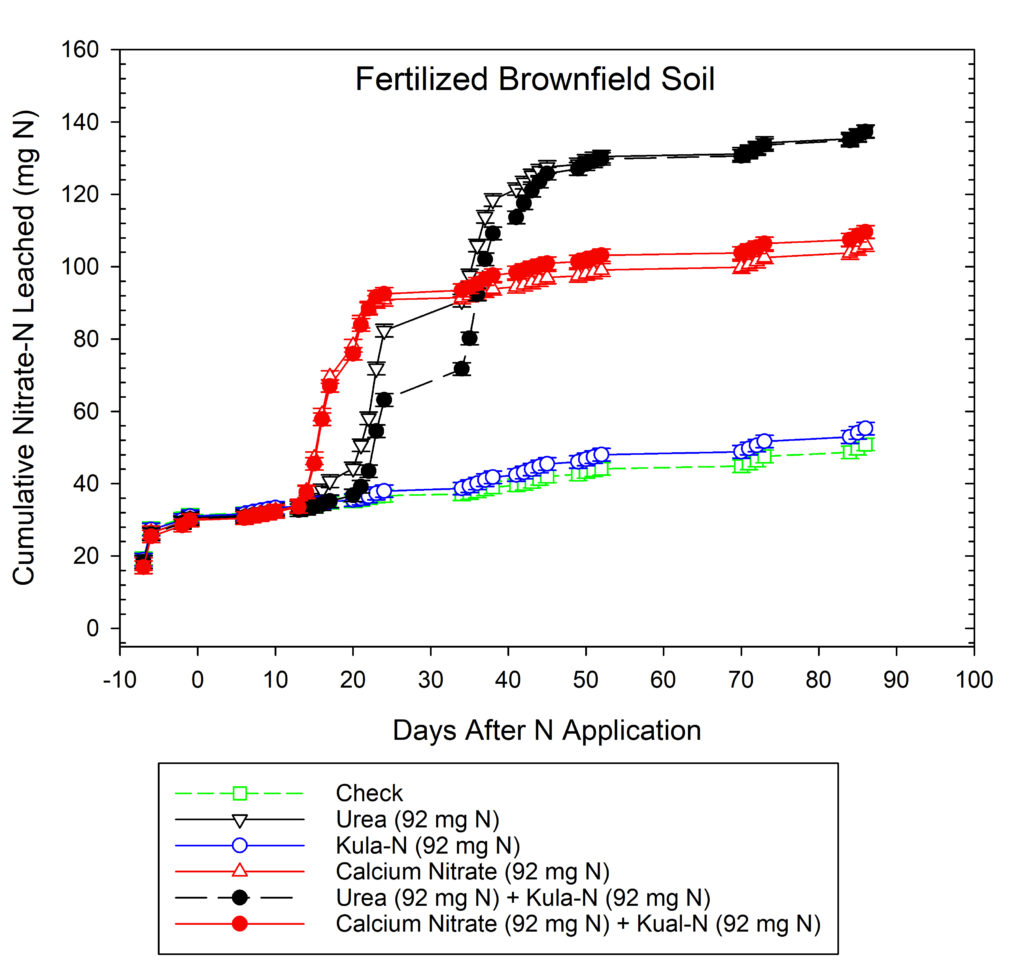2021 Annual Report
Contents
Letter from IFDC’s Leadership | Our Results in 2021 | Research Highlights
North and West Africa | East and Southern Africa | Asia | Publications and Presentations |
Financial Statement | Publication Credits
Letter from IFDC’s Leadership
A Call to Action
Again, the world finds itself in a time of crisis. Global energy and crop markets, already unstable from the pandemic, face catastrophic consequences due to Russia’s war in Ukraine. As a result, global fertilizer and food prices continue to rise. Many low- and middle-income countries dependent on food imports risk unprecedented undernourishment or even starvation due to a significant increase in basic commodity prices. For small-scale farmers in sub-Saharan Africa, decreased availability and affordability of fertilizers, specifically nitrogen, phosphorus, and potassium, are serious issues and will negatively impact staple food production. Many governments in Africa and Asia were caught off guard by the conflict, as high fertilizer prices at the end of last year were projected to ease. As noted by David M. Beasley, executive director of the World Food Programme, “There is no precedent even close to this since World War II.”1
Now, more than in decades, the need for fertilizer and food self-sufficiency, not to mention further fertilizer innovations to increase global nutrient use efficiency (NUE), is clearly evident. The reduced application of soil nutrients due to the pandemic and current war in Ukraine will further exacerbate the current degradation of 40% of the world’s soils. During the United Nations Food Systems Summit (UNFSS), soil was realized as a key means in “delivering the productive and sustained ecosystems needed to transform food systems to nature-, people and climate-positive.” Thus, the UNFSS Coalition of Action 4 Soil Health (CA4SH) was formed to convene “a multi-stakeholder coalition to facilitate the adoption and scaling of restoration practices that improve soil health in productive landscapes through investment and policy action.” As a member of this coalition, IFDC’s mission is as relevant as ever – to identify and scale sustainable solutions for soil and plant nutrition to achieve our vision of a food-secure and environmentally sustainable world through healthier soils and plants.
The efforts you are supporting are more than research for its own sake.
In 2021, work began that would support the world as it came out of the pandemic and unexpectedly entered our current context. Dashboards and decision support tools were launched to provide accurate data of input demand, supply and use; programs assisted in harmonizing regional fertilizer regulations; climate-smart and yield improving technologies were introduced to farmers; and IFDC scientists validated next-generation fertilizer products. Clearly, IFDC’s work has real implications in a world that, as demonstrated throughout these last few years, is always one step away from catastrophic impacts on food systems. While many things may be out of our control, one thing we can do is continue pursuing solutions that support the most vulnerable and build their resilience against climatic and economic shocks.
Business as usual cannot continue. Therefore, IFDC, as an international research-for-development organization, is embarking on two new initiatives that not only spearhead existing solutions but also will safeguard the future, which is a responsibility shared by all.
First, plans are in the works to hold an African Fertilizer and Soil Health Summit in 2023, bringing together high-level stakeholders to reach an agreement on a 10-year action plan for sustainable food security growth in Africa. Sign up for updates here: https://ifdc.org/africa-fertilizer-summit-ii/. The event will be held under the auspices of the African Union Commission (AUC), which has mandated IFDC, the Regional Network of Agricultural Policy Research Institutes (ReNAPRI), and the Alliance for African Partnership (AAP) to support the preparation of an agenda in close collaboration with the Food and Agriculture Organization of the United Nations (FAO), the Forum for Agricultural Research in Africa (FARA), the Alliance for a Green Revolution in Africa (AGRA), and many others.
Second, it is well known in farming and fertilizer industry circles that truly innovative fertilizer products are needed to improve global soil health and make truly regenerative agriculture a reality. Most of the basic high-analysis fertilizers in use today were developed last century at the Tennessee Valley Authority (TVA) National Fertilizer Development Center (NFDC) in Muscle Shoals, Alabama, to combat the desertification of U.S. farmland during the 1930s. A sense of urgency drove the creation and funding of the NFDC, where over 1,000 scientists worked toward the singular goal of transforming U.S. agriculture from a dustbowl-ridden and failing industry into the powerhouse that it is today.
This sense of urgency must be renewed for global soil health, especially on the African continent, where old and weathered soils cannot support the agricultural growth the nation needs to keep pace with its growing population.
As such, IFDC is proposing the establishment of a Soil Health and Plant Nutrition Innovation Center to be housed at its campus, where labs, a pilot plant complex, and researchers are already in place to fast-track new solutions for ever-emerging issues. This hub will become the global focal point of soil health and plant nutrition innovations, in which scientists, innovators, entrepreneurs, industry, and visionaries can collaborate to realize the rapid development and delivery of “concept to crop” products and technologies that promote sustained soil health and environmentally sustainable productivity increases and contribute to global food security.
We call to action those who committed their organizations to promoting soil health at the 2021 UNFSS to support these efforts. Those of us most privileged to be involved in solving these challenges must do so, and quickly. It is past time to save our earth and its inhabitants from the certain hardship and famine caused by the events of these past few years.
We hope you will join us in our mission.


The overall goal of IFDC research is to significantly boost the production of higher quality food using less land and water, improve the climate resilience of farming systems, and reduce the adverse environmental impacts associated with agriculture. Our research activities focus on improving nutrient use efficiency, reducing nutrient losses, and improving soil health through organic and inorganic sources and products to achieve sustained, balanced fertilization that ensures optimal economic returns for resource-constrained smallholder farmers globally.
During 2021, IFDC research efforts primarily focused on improving soil health, and thus yields, in sub-Saharan African countries. Activities supported improvement of the efficiency of inorganic and organic (microbial) fertilizers, including the use of local resources such as phosphate rock (PR), and implementation of integrated approaches involving decision support tools and soil maps and analyses to guide and validate research findings.
Enhanced Efficiency Fertilizers
Improving the fertilizer use efficiency of both nitrogen (N), currently low at 35-50%, and phosphorus (P), at less than 20%, is crucial for both economic and environmental reasons. The U.S. Environmental Protection Agency (EPA) and U.S. Department of Agriculture (USDA), in collaboration with The Fertilizer Institute (TFI), the National Corn Growers Association, The Nature Conservancy, and IFDC, launched the Next Gen Fertilizer Challenges in 2020. The agronomic and environmental competition investigating enhanced efficiency fertilizers (EEFs) from 14 global companies was conducted at IFDC in 2021. This was the first of its kind study in which 16 nitrogenous and 12 phosphatic fertilizers (EEFs and conventional) were evaluated for environmental and agronomic criteria under identical conditions using two soils from the Corn Belt (Minnesota and Iowa).
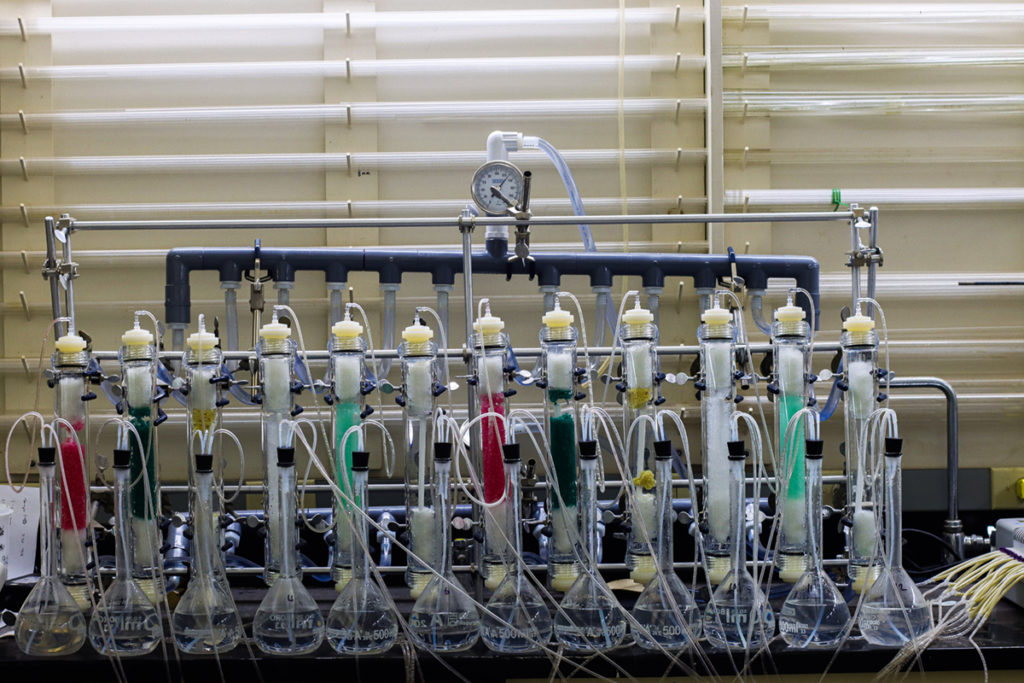
The following laboratory studies were conducted: (1) Quantification of Ammonia Volatilization; (2) Quantification of N Transformation using a Soil Incubation Technique; (3) P Release Characterization; (4) N and P Leaching, (5) Accelerated Nutrient Release Technique for Slow-Release Products; and (6) Quantification of Nitrous Oxide Emission. Yield and nutrient use efficiency were determined using sorghum as the test crop under greenhouse conditions. A complete evaluation of results from these crop trials will be made available in late 2022.
Balanced Fertilization
The Bureau for Resilience and Food Security (RFS)-funded Sustainable Opportunities for Improving Livelihoods with Soils (SOILS) Consortium implemented nutrient omission trials in the Amhara and Oromia regions of Ethiopia. The trials were conducted on 15 farmer-owned plots across Dembecha and Sekoru districts to evaluate crop response to different nutrient combinations and rates, with an emphasis on sulfur (S), zinc (Zn), and boron (B), in addition to N and P. Most of the farmlands in both districts were identified as deficient in N, P, S, Zn, and B by the Ethiopian Soil Information System (EthioSIS) soil fertility map. The trials were replicated three times per farmer plot. A total of 30 preplant soil samples were collected from two depths (0-20 cm and 20-60 cm). These samples were analyzed in both Ethiopian and IFDC headquarters laboratories to determine the accuracy of the national laboratory in Ethiopia and to identify any gaps for building its capacity in the future. The trials showed that both landscape elevation and fertilizer treatments affect maize yield significantly. As expected, response varied between sites. The results indicate:
- S, Zn, and B addition increased yields by 27%-43%, depending on the location and slope position.
- K addition did not increase yields in maize and significantly decreased yields at some locations and slope positions. Further research will be conducted in 2022 trials.
- Maize yields continued to increase substantially with application of 150% of the recommended fertilizer rate. Higher rates may be justified.
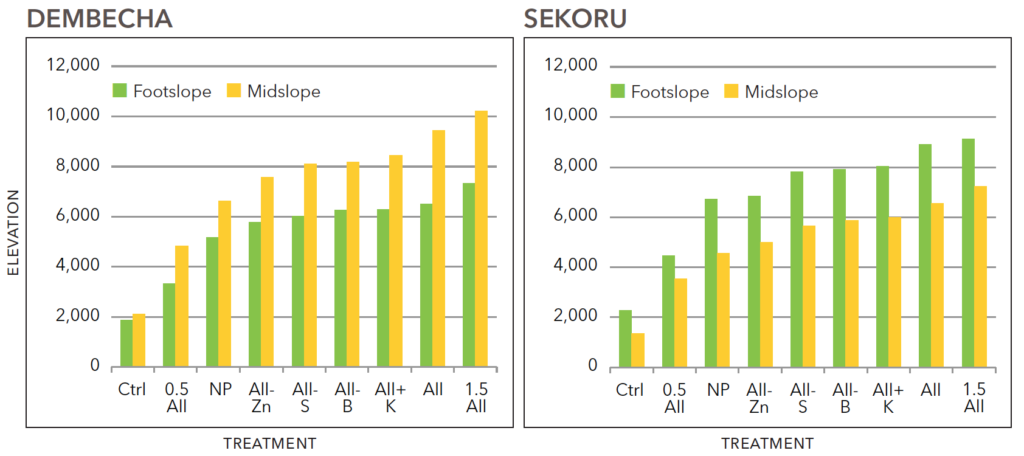
Improved Efficiency of Local Phosphate Rock
Greenhouse studies conducted by IFDC have consistently shown that activation of phosphate rock with water-soluble phosphate fertilizers that do not contain calcium, such as diammonium phosphate (DAP) or monoammonium phosphate (MAP), significantly improves its solubility, with low to medium reactivity and an average relative agronomic efficiency of more than 80%. With such promising results, IFDC, through SOILS Consortium activities in Niger, considered activation of Tahoua natural phosphate rock (TNP) to take advantage of locally available deposits by improving its overall agronomic efficiency for farm-level use. Activated TNP could be as effective as the water-soluble phosphate fertilizers currently available. To confirm this, IFDC and the National Agricultural Research Center in Niger (INRAN), in partnership with SOFFIA, a private mining firm based in Niger, conducted farmer-managed field trials using activated TNP for sorghum and cowpea in Doutchi (Kallon-Mota) and Gaya (Bengou, Tanda, and Tara) during the 2021 winter cropping season.
The results from the trials showed that activated TNP had a significantly positive effect on cowpea and sorghum yields; it was more effective than untreated TNP and just as effective as DAP. Activation thus improved the reactivity of the TNP, making it roughly equivalent to DAP in the fertilization of these crops. The trials will be repeated in the upcoming season and will elaborate on the economic aspect of activated TNP use, as a cost-effective alternative to DAP, by smallholder farmers in Niger.
Field research trials in Rwanda, comparing compounds (fertilizers with consistent nutrient concentrations in every granule) and blends (fertilizers containing mixtures of granules of varying nutrient compositions), showed no difference in yields, provided that the micronutrients (Zn, B, and copper [Cu]) were coated onto the blends rather than applied in granular form. This technique improves micronutrient distribution.
A blending video was produced to aid those conducting experiments involving multi-nutrient fertilizers, including omission trials, in the creation of blends at the trial level. The 15-minute video incorporated IFDC’s seven-plus years of experience in trial implementation and provided information on ingredient compatibility, rates and sources of micronutrients, and how to avoid toxic application levels. Coating micronutrients onto granular macronutrient fertilizers was also demonstrated. The blending procedures taught in the video can be directly transferred to a commercial blending facility.
Microbial Biofertilizers
Controlled experiments under laboratory and greenhouse conditions were conducted to evaluate Kula-N, a microbial biofertilizer produced by Kula Bio. The biofertilizer can work with any crop, fixing nitrogen from the air in the soil. Soil incubation and leaching studies have shown that nitrate-N leaching losses with Kula-N, whether applied alone or in combination with urea or calcium nitrate, are negligible. Preliminary greenhouse studies conducted in 2021 with sorghum as the test crop indicated that up to 50% of the urea-N requirement could be replaced by Kula-N with no significant difference in grain yield. The product has also been evaluated for its impact on nitrous oxide emission, and the results showed that application of 50% urea-N plus 50% Kula-N had an emission rate similar to 50% urea. Our initial studies have shown N losses are lower with Kula-N biofertilizer. Trials are currently underway with tomatoes.
Engineering and Pilot Plant Services
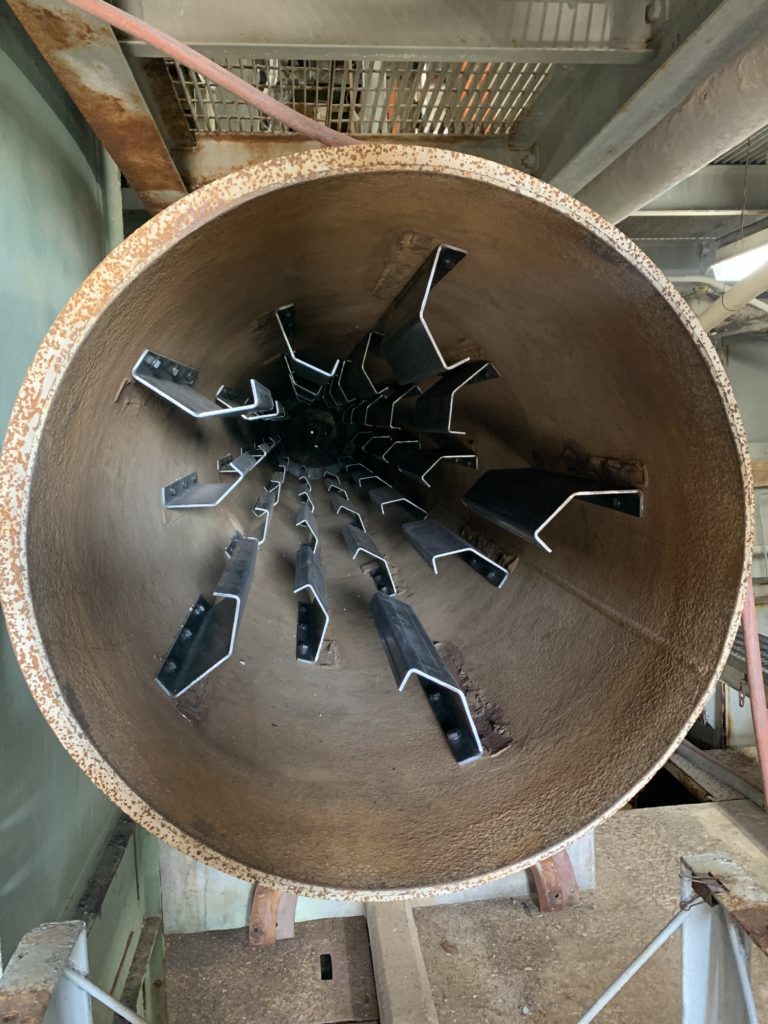
During 2021, the pilot plant and engineering teams executed projects for nine companies, representing five countries. The projects involved developing new fertilizer technologies, investigating various raw materials to lower production costs and methods to improve existing processes, and producing material for physical properties evaluation and field trials.
Work Involving New Technologies
- Lab and pilot plant work involving granulation of a mined ore and a nitrogen source.
- Pilot plant granulation of a phosphate efficiency enhancer.
- Pilot plant granulation of pH-modified NPK materials.
Work to Improve Existing Processes or Lower Production Costs
- Pilot plant granulation of NPK fertilizer using a challenging acid blend.
- Pilot plant investigation of binders for ammonium sulfate granulation.
- Ongoing physical and chemical properties evaluation for customer-generated samples.
Work to Produce Material for Agronomic Studies
- Pilot plant granulation of mined ore incorporated into NPK fertilizers.
Engineering and Technical Assistance
- Engineering review of a high-pressure ammonia system.
- Onsite technical assistance at a commercial NPK production plant to troubleshoot processing issues.
Several improvements were made to the pilot plant facilities, including an upgrade of the anhydrous ammonia system and replacement of the internal components of the rotary drum dryer and cooler in the large-scale plant. A multi-year improvement plan to refurbish existing assets and enhance capabilities was developed for the pilot plant, which will be executed in the next few years.
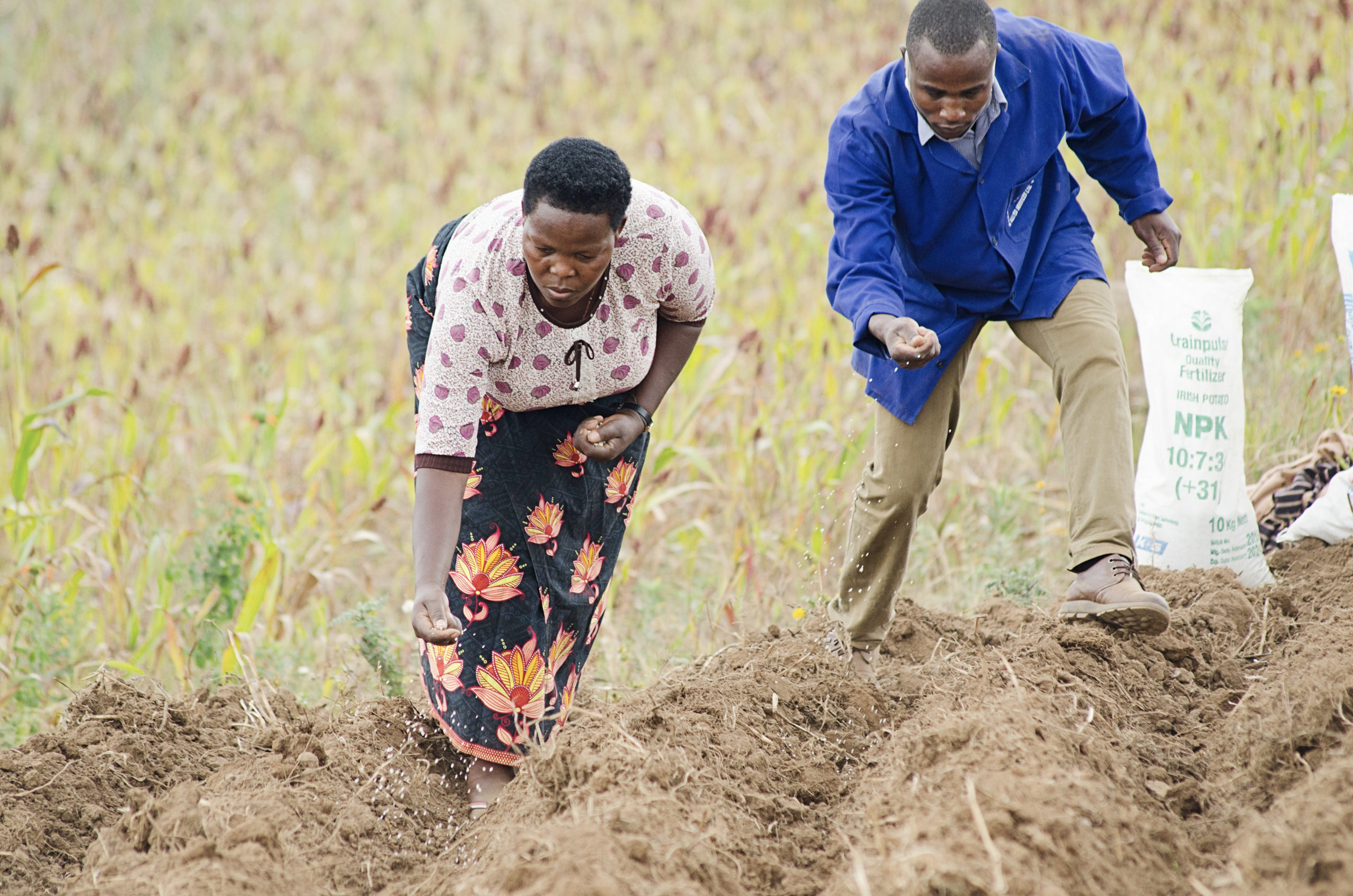
Success Story: Women’s Access to and Use of Fertilizers and Other Soil Fertility Management Practices
Studies show that female farmers are as efficient as male farmers, but they produce less because they control less land, use fewer inputs, and have less access to important services, such as knowledge and information sources and finance. During 2021, the SOILS Consortium engaged in field surveys to gain an understanding of factors associated with women’s access to and use of fertilizers and soil management practices in Uganda. There were obvious differences between male and female farmers in knowledge and information pathways on fertilizer products and application, as well as accessibility to agro-input dealers and other embedded services. These are affected by the gender roles of men and women, including socio-cultural factors, capital, resource control, and ownership.

Analyses of preliminary data indicate that women were much more inclined to use organic inputs generated from farm wastes and manure on their farms compared to men. This was more evident in home gardens versus cash crop farming systems. Women were constrained by mobility issues in traveling beyond 5 kilometers from their villages, restricting inorganic fertilizer use in general. Women farmers gained most of their knowledge on fertilizers and soil management practices from extension services and their participation in farmer groups; men gained knowledge from multiple sources, including extension services, agro-input shops, neighbors, and external training programs. The agro-input shops owned by women were more active in attracting women farmers in their communities. In general, access to credit by women farmers, with minimal to no collateral, was a major constraint to financing farming operations. Women farmers also expressed the need for more capacity building, exclusively for women, to understand the complexities involved in soil-water-nutrient management technologies. More in-depth analyses regarding gender dynamics in the supply of agro-inputs and implications on the access to and use of fertilizers among women farmers, along with their perceptions, will be carried out in 2022 for further policy inferences.
In 1987, IFDC opened its first office in West Africa, located in Lomé, the capital city of Togo. IFDC now has offices in nine additional countries (Benin, Burkina Faso, Côte d’Ivoire, Egypt Ghana, Mali, Niger, Nigeria, and Senegal) and projects operating in all 10 countries plus Cabo Verde, Cameroon, Chad, Gambia, Guinea, Guinea-Bissau, Liberia, Sierra Leone, and Mauritania.
2021 highlights of IFDC’s work in West Africa include developing fertilizer data management, visualization, and dissemination methods; increasing the adoption of efficient and targeted fertilizer techniques; supporting seed sector development and professionalization; building more inclusive farm-to-market agribusiness clusters; and enhancing interactions between scientific, financial, and government bodies.
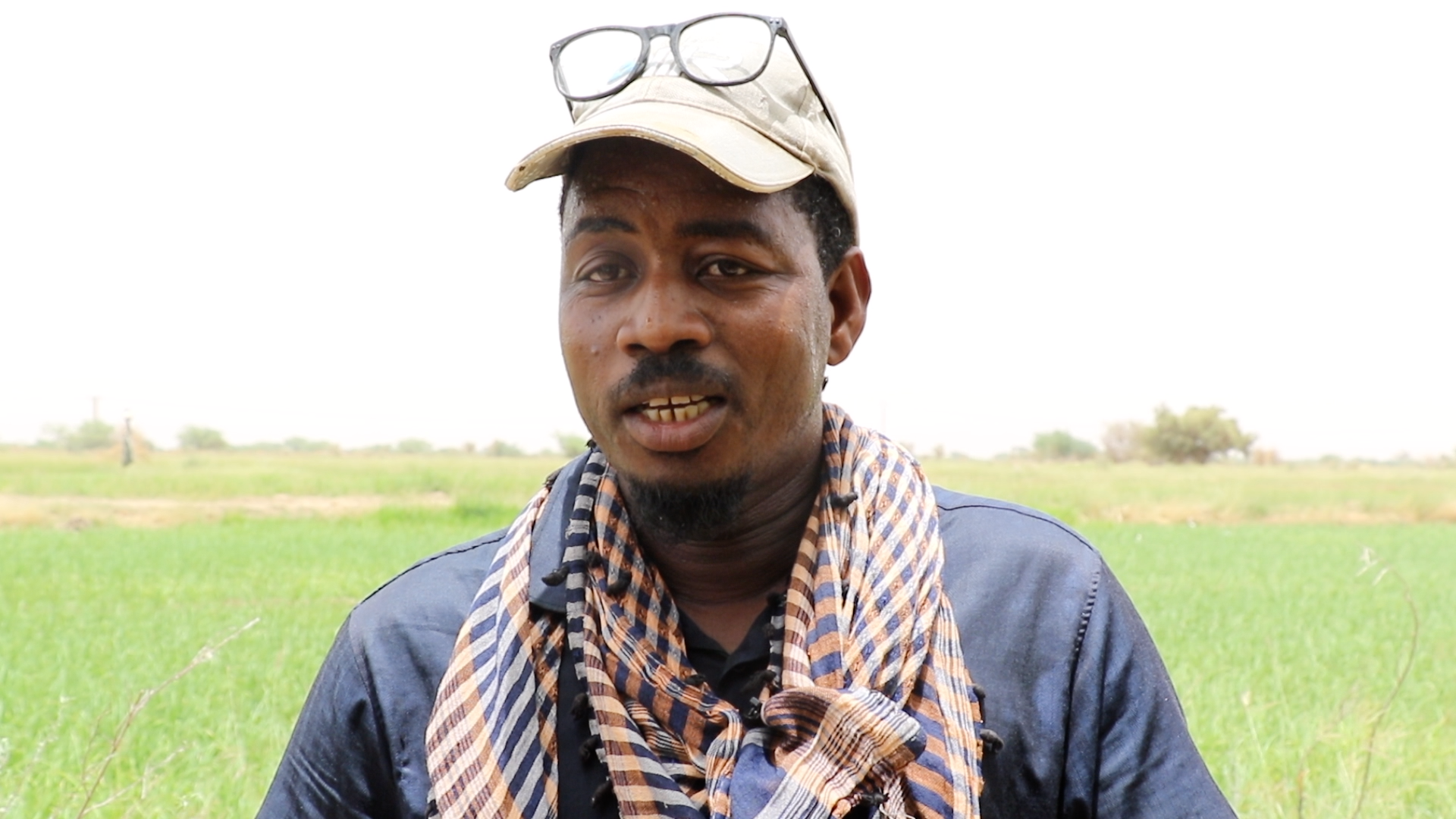
UDP: A Game Changer for Producers in Senegal
Racine Thierno Hanne, a 41-year-old farmer, has been producing rice and market gardening in Kodith Village, located in Podor Department of the Senegal River Valley since he started farming with his father at the age of 15. When his father became too old to farm, he left Hanne the family plot to encourage his son to stay in the village.
Hanne dreamed of emigrating but found that he had everything he needed at his family farm.
North and West Africa Project Updates
Swipe or use keyboard arrows to navigate. Click project for more info.
IFDC has worked in East and Southern Africa since the early 1990s and established a regional office in Nairobi, Kenya, in 2009. Today, with offices in Burundi, Ethiopia, Kenya, Mozambique, South Sudan, and Uganda and projects underway in all six countries, IFDC is helping develop, strengthen, and innovate new paths forward for the smallholder farmers and traders, transporters, banks, and policymakers who work together to put food security first across the region.
2021 highlights of IFDC’s work in the region include a focus on strengthening access to improved, quality seed for smallholder farmers, teaching climate-smart practices, and enhancing the participation of women and youth in agricultural market systems.
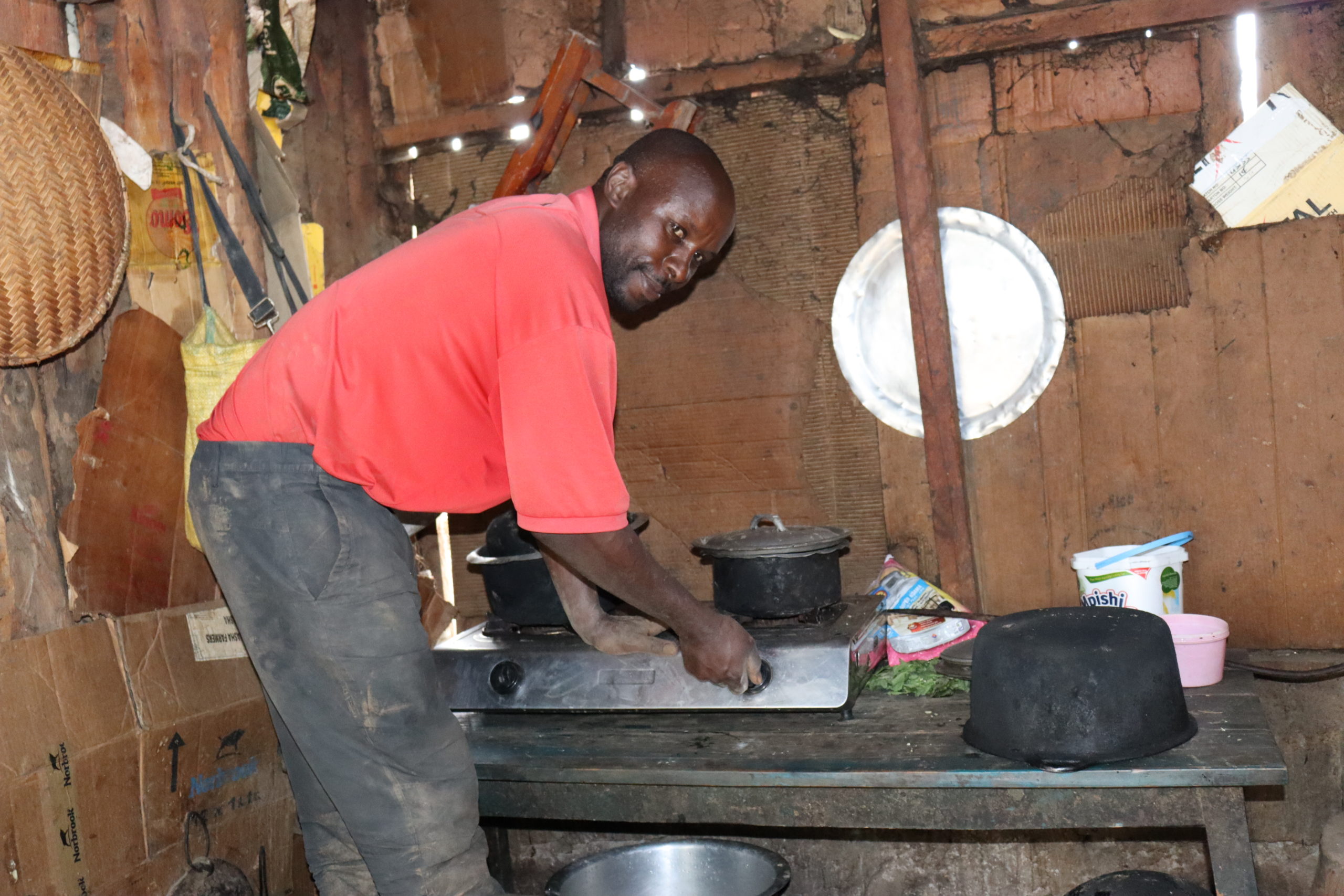
Transforming Kenya’s Food Basket: Joshua Wairegi’s Story
Soil acidity, a lack of certified seed, and farming inefficiencies prevent many Kenyan farmers from realizing their potential. After attending a PCB potato farmer training, Joshua Wairegi has consistently scaled up his farming. He cultivates potatoes on 4 acres and saw a significant yield increase at harvest.
Wairegi and his farmer group now understand that fertilizer, if used properly, is for everyone. With the improved profits from potatoes and dairy farming, Wairegi was able to start building a family home, and his community is reclaiming their title as the food basket of Kenya.
East and Southern Africa Project Updates
Swipe or use keyboard arrows to navigate. Click project for more info.
IFDC has worked in Asia since 1977, when the organization’s first field trials of fertilizer deep placement (FDP) were conducted in Bangladesh. In 1992, its Asia Division was established, with a permanent office opened in Dhaka, Bangladesh. Since then, IFDC has implemented projects in 30 countries across the continent. In 2020, IFDC opened its first office in India, located in Hyderabad.
2021 saw IFDC projects active in India’s Telangana State and in Nepal. These projects worked to improve fertilizer availability, share techniques to improve fertilizer efficiency, conduct soil mapping to identify nutrient requirements, and engage women and youth in the agriculture sector.
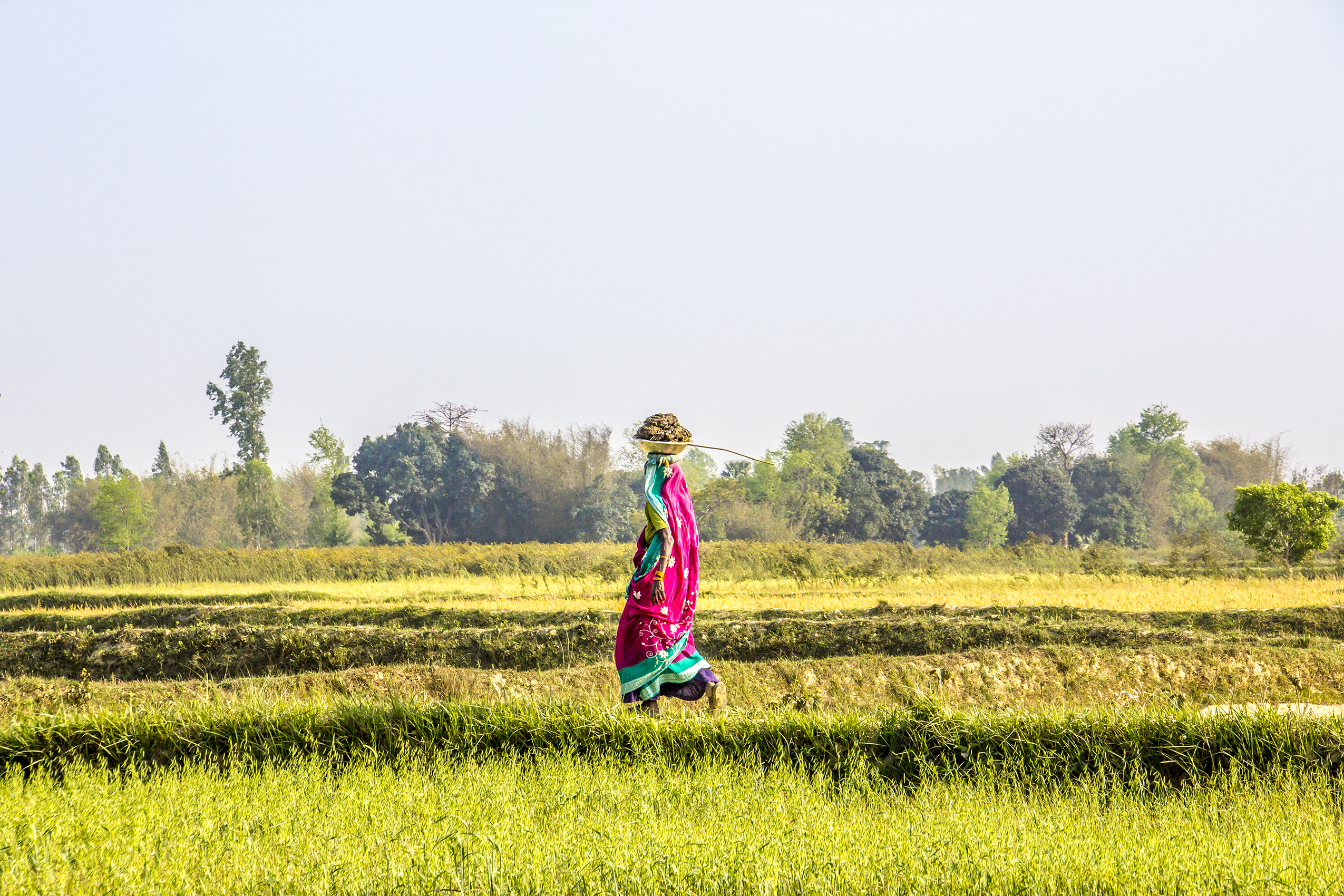
Managing Soil Acidity for Food Security
Management of soil acidity is crucial for improving soil health and crop productivity. Crop productivity is relatively low in Nepal compared to other countries in south Asia. Without managing soil acidity, farmers may not be able to achieve potential yields even after applying the right amount of fertilizers. Dr. Yam Gaihre, Soil Scientist, IFDC, and Dr. Shree Prasad Vista, Chief, National Soil Science Research Centre (NSSRC), Nepal Agricultural Research Council, weigh in on the issues.
Asia Project Updates
Swipe or use keyboard arrows to navigate. Click project for more info.
Publications and Presentations
Publications
Abdallah, A., C.M. Parihar, S. Patra, H.S. Nayak, Y.S. Saharawat, U. Singh, M.D. Parihar, S.K. Kakraliya, I.N. Nassar, F. Ugolini, W. Zohir, and M.M. Shalaby. 2021. “Critical Evaluation of Functional Aspects of Evaporation Barriers through Environmental and Economics Lens for Evaporation Suppression – A Review on Milestones from Improved Technologies,” Science of the Total Environment, 788:147800. https://doi.org/10.1016/j.scitotenv.2021.147800
Adzawla, W., I.N. Kissiedu, E. Martey, P.M. Etwire, W.K. Atakora, A. Gouzaye, and P.S. Bindraban. 2021. “Does Fertilizer Use Increase Farmer’s Maize Yield in Ghana?” IFDC FERARI Policy Brief No. 9.
Adzawla, W., I.N. Kissiedu, E. Martey, P.M. Etwire, W.K. Atakora, A. Gouzaye, and P.S. Bindraban. 2021. “Fertilizer Use and Yields of Maize, Rice, and Soybean Farmers in Ghana,” IFDC FERARI Policy Brief No. 6.
Adzawla, W., I.N. Kissiedu, E. Martey, P.M. Etwire, W.K. Atakora, A. Gouzaye, and P.S. Bindraban. 2021. “Poverty and Food and Nutritional Security Among Farm Households in Ghana,” IFDC FERARI Policy Brief No. 5.
Adzawla, William, I.N. Kissiedu, Edward Martey and Prince M. Etwire, Williams K. Atakora, Amadou Gouzaye, and P.S. Bindraban. 2021. “Baseline Study on Fertilizer Usage and Food/Nutrition Security in Sudan Savannah, Guinea Savannah, and Transitional Zones of Ghana,” IFDC FERARI Research Report No. 5.
Adzawla, William, Williams K. Atakora, Amadou Gouzaye, and Prem S. Bindraban, 2021. “Crop Yield and Fertilizer use Among Farmers in Guinea Savannah and Transition Zones of Ghana,” IFDC FERARI Research Report No. 6.
Adzawla, William, Williams K. Atakora, Isaac N. Kisseidu, Edward Martey, Prince M. Etwire, Amadou Gouzaye, and Prem S. Bindraban. 2021. “Characterization of Farmers and the Effect of Fertilization on Maize Yields in the Guinea Savannah, Sudan Savannah, and Transitional Agroecological Zones of Ghana,” EFB Bioeconomy Journal. https://doi.org/10.1016/j.bioeco.2021.100019
Anderson, J.R., R. Birner, L. Nagarajan, A. Naseem, and C.E. Pray. 2021. “Private Agricultural R&D: Do the Poor Benefit?” Journal of Agricultural & Food Industrial Organization, 19(1):3-14. https://www.degruyter.com/journal/key/JAFIO/19/1/html
Baral, B.R., K.R. Pande, Y. Gaihre, K.R. Baral, S.K. Sah, Y.B. Thapa, and U. Singh. 2021. “Real-Time Nitrogen Management Using Decision Support-Tools Increases Nitrogen Use Efficiency of Rice,” Nutrient Cycling in Agroecosystems, 119(3):355-368. https://doi.org/10.1007/s10705-021-10129-6
Bindraban, P.S., R. Groot, and U. Singh. 2021. “Soil Nutrients: The Key to Meeting the Triple Global Challenge of Food and Nutrition Security, Climate, and Biodiversity,” Fertilizer Focus, 38(4), July/August 2021.
Bregaglio, S., L. Willocquet, K.C. Kersebaum, R. Ferrise, T. Stella, T.B. Ferreira, W. Pavan, S. Asseng, and S. Savary. 2021. “Comparing Process-Based Wheat Growth Models in Their Simulation of Yield Losses Caused by Plant Diseases,” Field Crops Research, 265:108108. https://doi.org/10.1016/j.fcr.2021.108108
Demiss, M., J. Sanabria, and U. Singh. 2021. “Long-Run Spatial and Temporal Yield Variability Analysis of Three Major Crops Affected by Fertilizer Use and Rainfall in Ethiopia over the Past 15 Years (2004/05-2018/19),” Sustainable Agriculture Research, 10(3). https://doi.org/10.5539/sar.v10n3p1
Dhakal, K., B.R. Baral, K.R. Pokhrel, N.R., Pandit, Y.K. Gaihre, and S.P. Vista. 2021. “Optimizing N Rate for Increasing Yield and Profits of Rainfed Maize Grown under Sandy Loam Soil,” Nitrogen, 2:359-377. https://doi.org/10.3390/nitrogen2030025
Diene, P.P., P.S. Bindraban, A. Laamari, W. Adzawla , Y. Iddrisu, and W.K. Atakora. 2021. “Analysing Power Dynamics and Scaling Potential of the Proposed Ghana Fertilizer Platform,” IFDC FERARI Policy Brief No. 8.
Diene, P.P., P.S. Bindraban, A. Laamari, William Adzawla, Y. Iddrisu, and W.K. Atakora. 2021. “Power Dynamics and Scaling Potential of the Proposed Ghana Fertilizer Platform,” IFDC FERARI Research Report No. 8.
Dixon, J.M, J. Weerahewa, J. Hellin, M.F. Rola-Rubzen, J. Huang, S. Kumar, A. Das, M.E. Qureshi, T.J. Krupnik, K. Shideed, M.L. Jat, P.V. Vara-Prasad, S. Yadav, A. Irshad, A. Asanaliev, A. Abugalieva, A. Karimov, B. Bhattarai, C.Q. Balgos, F. Benu, H. Ehara, K/ Pant, J.M.P. Sarmiento, J.C. Newby, J. Pretty, H.Tokuda, H. Weyerhaeuser, L.N. Digal, L.Li, M.A.R. Sarkar, M.Z. Abedin, P. Schreinemachers, Q. Grafton, R.C. Sharma, S. Saidzoda, S. Lopez-Ridaura, S. Coffey, S.P. Kam, S.S. Win, S. Praneetvatakul, T. Maraseni, V. Touch, W. Liang, Y.S. Saharawat, and J. Timsina. 2021. “Response and Resilience of Asian Agrifood Systems to COVID-19: An Assessment Across Twenty-Five Countries and Four Regional Farming and Food Systems,” Agricultural Systems, 193:103168. https://doi.org/10.1016/j.agsy.2021.103168
Dzatse, A.A., J. Kugbe, W. Adzawla, W. Atakora, P.S. Bindraban. 2021. “Productivity of Maize and Soybean as Affected by Sulfur and Primary Nutrients on a Feralic Lixisol in Northern Ghana,” IFDC FERARI Research Note 4.
Fernandes, J.M., E.M. del Ponte, J.P. Ascari, T.J. Krupnik, W. Pavan, F. Vargas, and T. Berton. 2021. “Towards an Early Warning System for Wheat Blast: Epidemiological Basis and Model Development,” https://doi.org/10.19103/as.2021.0092.22
Fuentes, B., A.J. Ashworth, M. Ngunjiri, and P. Owens. 2021. “Mapping Soil Properties to Advance the State of Spatial Soil Information for Greater Food Security on US Tribal Lands,” Frontiers in Soil Science. https://doi.org/10.3389/fsoil.2021.695386
Gaihre, Y., U. Singh, W. Bible, J. Fugice, and J. Sanabria. 2020. “Mitigating N2O and NO Emissions from Direct-Seeded Rice with Nitrification Inhibitor and Urea Deep Placement,” Rice Science, 27(5):434-444. https://doi.org/10.1016/j.rsci.2020.03.005
Hakimi, S.S., R. Raina, and Y.S. Saharawat. 2021. “Impact of Evaporative Cooling Technology and Post-Harvest Treatments on Shelf Life and Quality of Tomato of Two Different Harvesting Stages (Solanum Lycopersicum var. Pearson),” Journal of Ecoscience and Plant Revolution, 2(1):8-16. doi.org/10.37357/1068/jser.2.1.02
Iddrisu, Y., P.S. Bindraban, W.K. Atakora, B.T. Aremu, P. Annequin, K. Kouassi, A. Fernando, R. Wheeler, and F. Gyasi. 2021. “The Ghana Fertilizer Platform Study,” IFDC FERARI Research Report No. 3.
Ippolito, T.A., J. E. Herrick, E. L. Dossa, M. Garba, M. Ouattara, U. Singh, Z.P. Stewart, P.V.V. Prasad, I.A. Oumarou, and J.C. Neff. 2021. “A Comparison of Approaches to Regional Land-Use Capability Analysis for Agricultural Land Planning,” Land, 10(5):458. https://doi.org/10.3390/land10050458
Jing, Q., B. McConkey, B. Qian, Ward Smith, Brian Grant, Jiali Shang, J. Liu, P.S. Bindraban, and M. St. Luce. 2021. “Assessing Water Management Effects on Spring Wheat Yield in the Canadian Prairies using DSSAT Wheat Models,” Agricultural Water Management, 244(2021):106591. https://doi.org/10.1016/j.agwat.2020.106591
Katyal, J.C., U. Srivastava, B. Mal, and Y.S. Saharawat. 2021. “Proceedings and Recommendations: Regenerative Agriculture for Soil Health, Food and Environmental Security,” Trust for Advancement of Agricultural Sciences (TAAS).
Kouame, K.K.A., P.S. Bindraban, I.N. Kissiedu, K. El Mejahed, and W.K. Atakora. 2021. “Evaluating and Geospatial Analysis of Variability in Maize Yield Response to Fertilizer (NPK) Using Modeling in Ghana,” IFDC FERARI Research Report No 7.
Kouame, K.K.A., P.S. Bindraban, I.N. Kissiedu, K. El Mejahed, and W.K. Atakora. 2021. “Identifying Factors that Drive Yield Response of Maize to NPK Fertilization,” IFDC FERARI Policy Brief No. 7.
Krupnik, T.J., J. Timsina, K.P. Devkota, B.P. Tripathi, T.B. Karki, A. Urfels, Y.K. Gaihre, D. Choudhary, A.R. Beshir, V.P. Pandey, B. Brown, H. Gartaula, S. Shahrin, and Y.G. Ghimire. 2021. “Agronomic, Socioeconomic, and Environmental Challenges and Opportunities in Nepal’s Cereal-Based Farming Systems,” Advances in Agronomy, 170:155-288.
Nagarajan, L., T. Muesembi, and A. Fernando. 2021. “Existing and Potential Last Mile Delivery of Seeds,” a Feed the Future Global Supporting Seed Systems for Development (S34D) report. s34d_existing_and_potential_business_models_ on_last_mile_delivery_of_seeds.pdf (crs.org)
Pray, C., J. Anderson, S. Ledermann, and L. Nagarajan. 2021. “The Agricultural Innovation System in the Context of the 2020 Pandemic,” Policy Brief, Rutgers University Policy Research Consortium. http://ru-ftf.rutgers.edu/Policy_Briefs/Pray%20et%20al%202021.pdf
Saharawat, Y.S., M. Gill., M. Gathala, T.K. Karki, D.B.T. Wijeratne, S.S. Samiullah, N. Chaudhary, M.E. Haque, R.W. Bell, C.M. Parihar, R. K. Malik, and U. Singh. 2021. “Conservation Agriculture in South Asia: Present Status and Future Prospects,” IN Advances in Conservation Agriculture, Aamir Kassam (Ed.), Volume 3 – Adoption and Spread.
Senthilkumar, K., F.S. Sillo, J. Rodenburg, C. Dimkpa, K. Saito, I. Dieng, and P.S. Bindraban. 2021. “Rice Yield and Economic Response to Micronutrient Application in Tanzania,” Field Crops Research, 270:108201.
Singh, U., and A.J. Medford. 2021. “Green Decentralized Fertilizer Production,” Fertilizer Focus, March/April, 58-62.
Vista, S.P., K. B. Karki, Y.K. Gaihre, S. Sharma, and B.R. Baral. 2021. “Soil Properties.” IN The Soils of Nepal, R.B. Ojha and D. Panday (Eds.), World Soils Book Series, Springer.
Presentations
Bindraban, P. 2021. “Kiss the Ground: Basic Principles in Ecology,” presented at Food Film Thought – Soil Edition, Accra, Ghana, April 1.
Bindraban, P. 2021. “Soil Health Strategies for Agricultural Intensification in Africa,” presented at the 2021 Borlaug Dialogue, October 22 (online).
Bindraban, P. 2021. “The Need for Innovative Fertilizers to Stay Within the Safe Operating Space of Our Planetary Boundaries,” presented at the CAES Spring Seminar Series, Connecticut, USA, February 10 (online).
Bindraban, P., and W. Adzawla. 2021. “Nutrient Use Efficiency,” presented at the Second Fertilizer Stakeholder Roundtable Meeting, Accra, Ghana, September 23-24.
Bindraban, P. and W. Adzawla, 2021. “Nutrient Use Efficiency,” presented at the Third Fertilizer Stakeholder Roundtable Meeting, Koforidua, Ghana, November 10-11.
Bindraban, P., R. Groot, W. Atakora, W. Adzawla, A. Gouzaye, and M. El Gharous, 2021. “Innovative Fertilization & Application Technologies – For Yield and Nutrition,” presented in a virtual public-private partnership session at the ASA, CSSA, and SSSA Special Symposium, Salt Lake City, Utah, USA, November 9.
Fugice, Job. 2021. Laboratory Assessment and Capacity Building, Ghana.
Fugice, Job. 2021. Laboratory Assessment and Capacity Building, Nigeria.
Pray, C.E., L. Nagarajan, and A. Naseem. 2021“What is Driving the Growth of Private Agricultural R&D? Understanding the Role of Demand Diversification, IPRs, Technology, and Policy,” presented at the symposium on Privatization of Agricultural R&D and Inclusion of Smallholders in Emerging Markets: Recent Evidence, International Conference for Agricultural Economists (ICAE) Symposium, August 25 (online).
Saharawat, Y.S. 2021. “Innovation and Agricultural Reforms towards Farmers’ Prosperity,” presented at the 6th National Youth Convention virtual mode at PJTSAU (State Agricultural University), Hyderabad, Telangana, February 20-21.
Saharawat, Y.S. 2021. “Innovative Fertilizer and Fertilizer Management: Key for Conservation and Precision Agriculture based Sustainable Production Systems and Environment,” presented during the session on “Farm and Ecosystem Level Benefits of CA Systems to Society and Environment” at the 8th World Congress on Conservation Agriculture (8WCCA) Bern, Switzerland, June 20-24.
Vista, S.P., and Y.K. Gaihre. 2021. “Fertilizer Management for Horticultural Crops using Digital Soil Maps,” presented at the Tenth National Horticulture Workshop, Kathmandu, Nepal, February 28-March 1. Wendt, J.W., Q. Genga, and M. Ngunjiri. 2021. “Making Fertilizer Blends in Small Batches,” training video on blending multi-nutrient fertilizers for trials and demonstrations. https://youtu.be/zO7KzhHlunw.
Financial Statement
The following is an unaudited summary of financial information for the year ended December 31, 2021. The full financial statements and the independent auditors’ reports are available from IFDC upon request. IFDC’s audited financial statements are available online at this page.
Statement of Revenue & Expenses for the Year Ended December 31, 2021
| Revenues & Gains | 2021 (U.S. $’000) | 2020 (U.S. $’000) |
|---|---|---|
| Alliance for a Green Revolution in Africa | 1,102 | 898 |
| African Development Bank | 189 | 281 |
| Board of Directors Donations | – | 41 |
| Dutch Embassies | 14,393 | 18,102 |
| International Fertilizer Association | 100 | 167 |
| International Food Policy Research Institute (IFPRI) | 456 | – |
| Islamic Development Bank | 839 | 674 |
| Embassy of Ireland (Irish Aid) | 348 | 402 |
| GIZ Uganda | 497 | – |
| Mercy Corps | 386 | – |
| Millennium Challenge Account (MCA) | 426 | 690 |
| Netherlands Directorate-General for International Cooperation (DGIS) | 15,930 | 13,304 |
| OCP Foundation | 1,566 | 2,044 |
| RTI International | 108 | – |
| Swiss Agency for Development and Cooperation (SDC) | 2,311 | 571 |
| United Nations Office for Project Services (UNOPS-LIFT) | – | 941 |
| U.S. Agency for International Development | 9,288 | 8,620 |
| Walmart Foundation, Inc. | 237 | 290 |
| Others | 3,700 | 3,579 |
| Total Revenues & Gains | 52,175 | 50,604 |
| Expenses | 2021 (U.S. $’000) | 2020 (U.S. $’000) |
|---|---|---|
| Research and development | 3,901 | 3,416 |
| Field projects | 34,909 | 36,331 |
| Capacity building | 6,733 | 3,256 |
| Support activities | 6,612 | 5,491 |
| Total Expenses | 52,155 | 48,494 |
| Surplus/(loss) | 20 | 2,110 |
Balance Sheet for the Year Ended December 31, 2021
| 2021 (U.S. $’000) | 2020 (U.S. $’000) | |
|---|---|---|
| Total assets | 26,667 | 29,665 |
| Total liabilities | 27,020 | 30,038 |
| Unrestricted net assets | (353) | (373) |
| Total Liabilities and Net Assets | 26,667 | 29,665 |
Expenses by Function for the Year Ended December 31, 2021
| Function | 2021 (U.S. $’000) | 2020 (U.S. $’000) |
|---|---|---|
| Personnel | 23,274 | 20,596 |
| Travel | 2,662 | 1,744 |
| Operations | 5,370 | 4,559 |
| Workshops & training | 6,725 | 3,242 |
| Equipment & supplies | 2,558 | 2,422 |
| Subcontracts & grants | 11,566 | 15,931 |
| Total Expenses | 52,155 | 48,494 |
Publication Credits
Contributors: Prem Bindraban, Anna Goodwin, Ruth Kamunya, Julie Kohler, Olga Kokode, Kepha Machira, Matthew Miller, Latha Nagarajan, Upendra Singh, Kasta Staggs, James Thigpen
Executive Editor: James Thigpen
Editor: Julie Kohler
Graphics and GIFs: Meg Ross, Samantha Scannell, James Thigpen
Online Layout: James Thigpen
Production Consultant: Donna Venable
Copyright © 2022 by IFDC. All Rights Reserved.
All photographs, unless otherwise noted, are from the IFDC photo archives.




















